Abstract
It is generally assumed that only actively growing bacteria are killed by inhibitors of peptidoglycan synthesis. Several exceptional examples are described here. As expected, ampicillin did not lyse nongrowing, amino acid-deprived cultures of relA+ strains of Escherichia coli, but the subsequent addition of several ribosome inhibitors (chloramphenicol, tetracycline, gentamicin, and kanamycin) caused various degrees of lysis in such ampicillin-treated cultures. Of the antibiotics tested, only streptomycin was ineffective in this regard. Peptidoglycan synthesis has been shown to be inhibited in amino acid-deprived relA+ bacteria by the stringent control mechanism (E. E. Ishiguro and W. D. Ramey, J. Bacteriol. 127:1119-1126, 1976), and the ribosome inhibitors tested here relaxed peptidoglycan synthesis to various degrees under these conditions. The relative lysis-inducing activities of the ribosome inhibitors on ampicillin-treated, amino acid-deprived bacteria were directly correlated to their relative activities as stringent control antagonists. This phenomenon was not dependent on amino acid deprivation. Cultures treated with growth inhibitory levels of the various ribosome inhibitors alone were lysed by ampicillin, apparently because peptidoglycan synthesis continues uninhibited when growth is arrested by treatment with ribosome inhibitors. These results indicate that autolysis can be triggered by the inhibition of peptidoglycan synthesis occurring in the absence of wall expansion; i.e., active cell growth is unnecessary.
Full text
PDF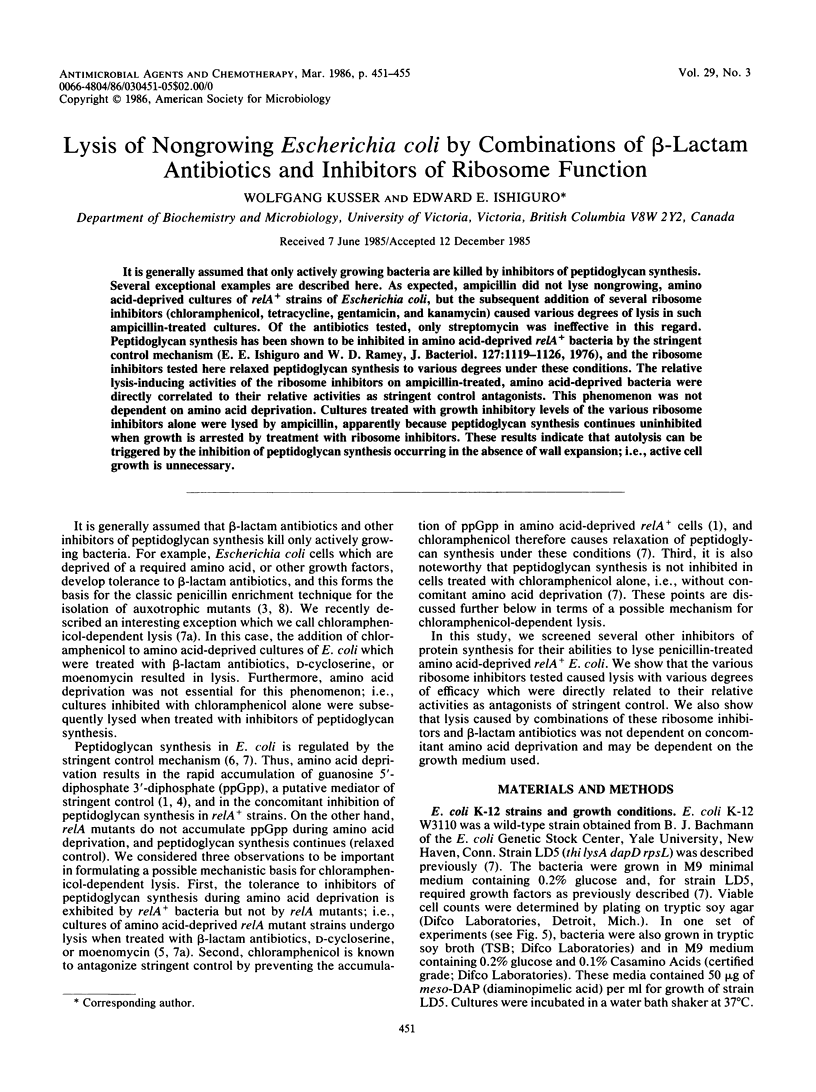
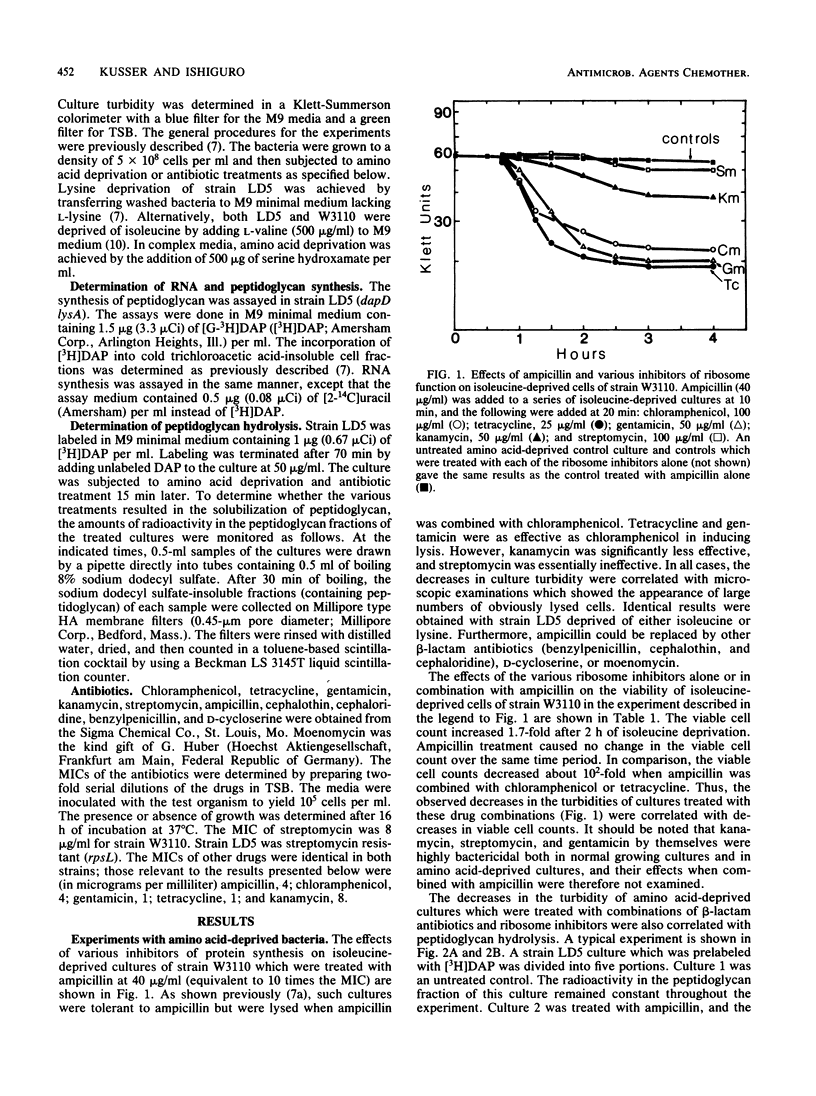
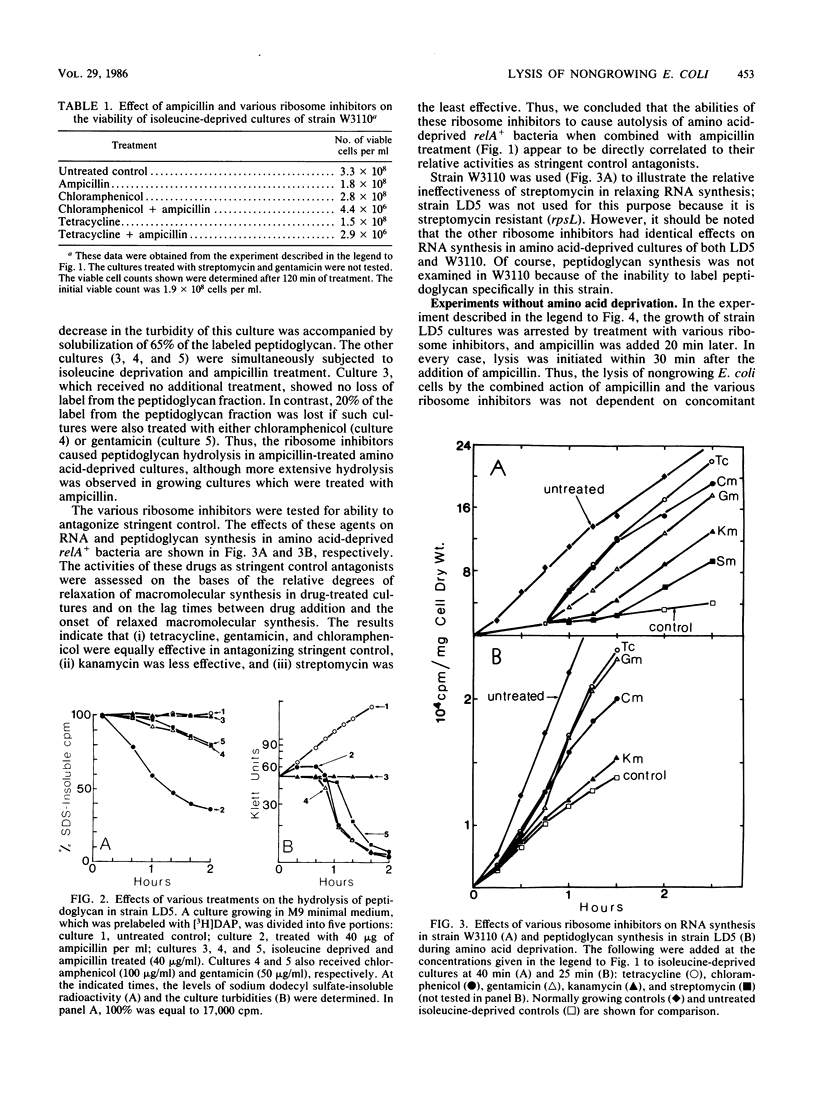
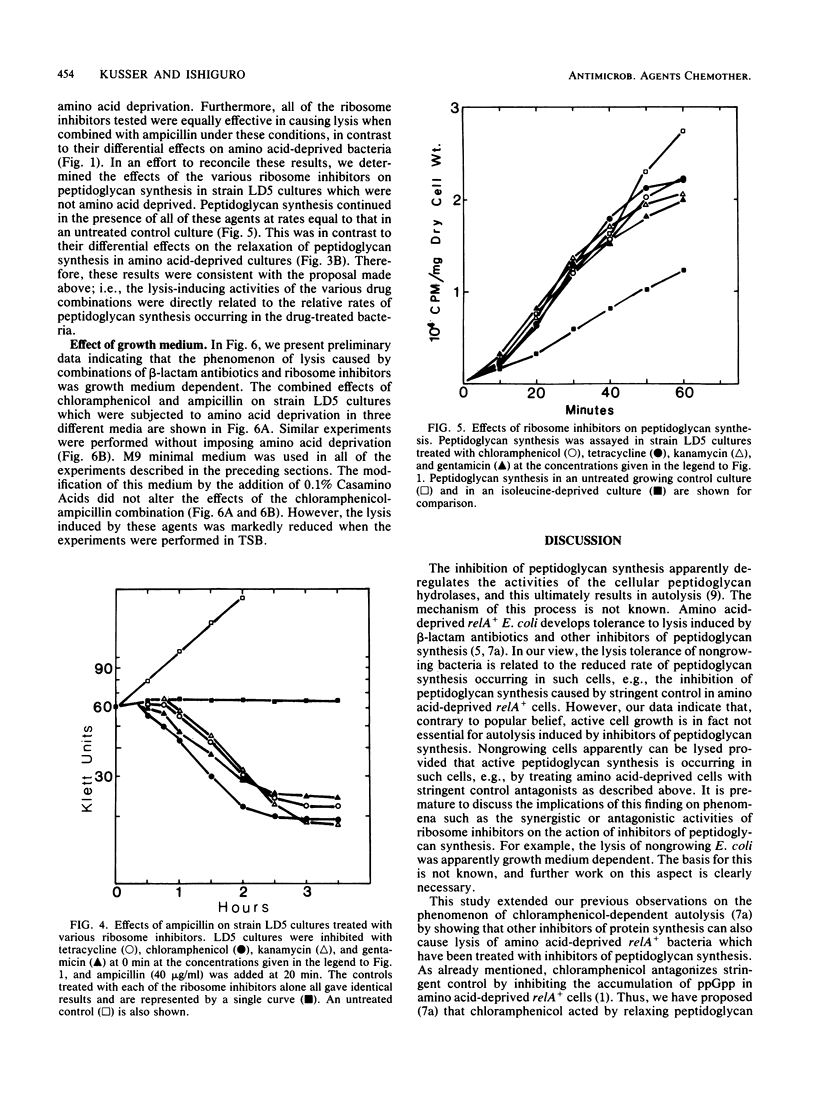
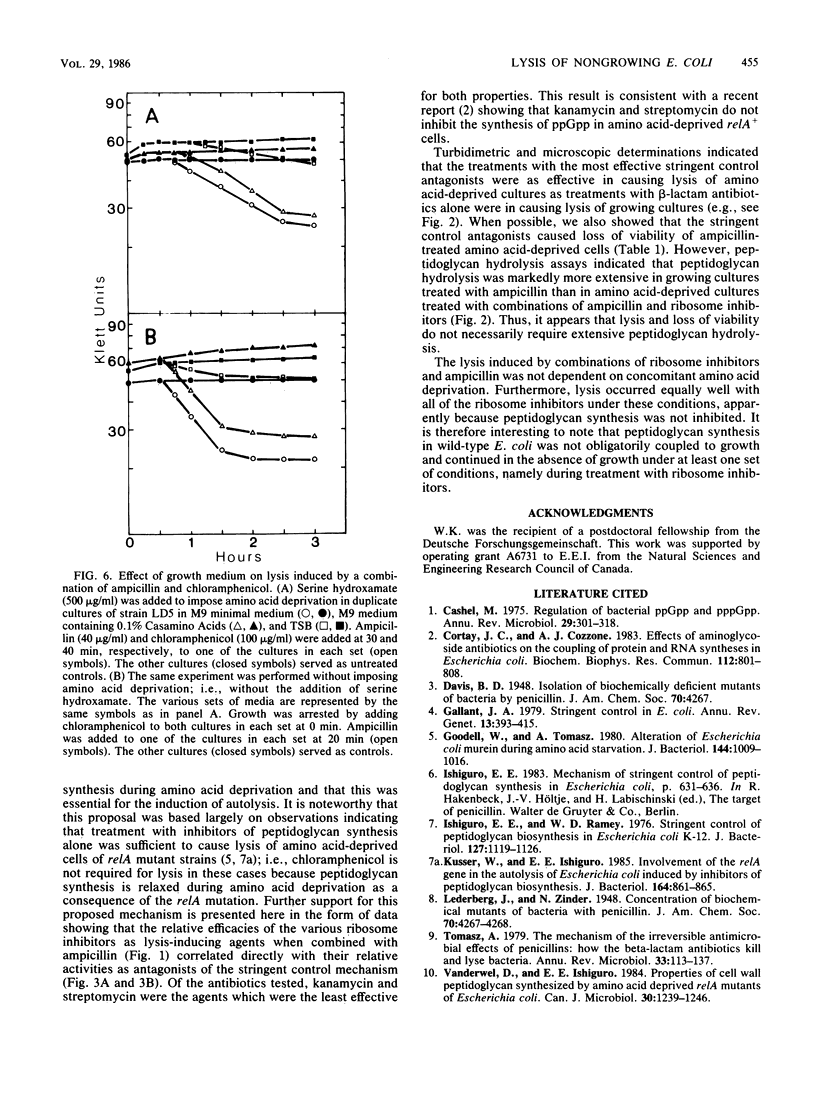
Selected References
These references are in PubMed. This may not be the complete list of references from this article.
- Cashel M. Regulation of bacterial ppGpp and pppGpp. Annu Rev Microbiol. 1975;29:301–318. doi: 10.1146/annurev.mi.29.100175.001505. [DOI] [PubMed] [Google Scholar]
- Cortay J. C., Cozzone A. J. Effects of aminoglycoside antibiotics on the coupling of protein and RNA syntheses in Escherichia coli. Biochem Biophys Res Commun. 1983 May 16;112(3):801–808. doi: 10.1016/0006-291x(83)91688-1. [DOI] [PubMed] [Google Scholar]
- Gallant J. A. Stringent control in E. coli. Annu Rev Genet. 1979;13:393–415. doi: 10.1146/annurev.ge.13.120179.002141. [DOI] [PubMed] [Google Scholar]
- Goodell W., Tomasz A. Alteration of Escherichia coli murein during amino acid starvation. J Bacteriol. 1980 Dec;144(3):1009–1016. doi: 10.1128/jb.144.3.1009-1016.1980. [DOI] [PMC free article] [PubMed] [Google Scholar]
- Ishiguro E. E., Ramey W. D. Stringent control of peptidoglycan biosynthesis in Escherichia coli K-12. J Bacteriol. 1976 Sep;127(3):1119–1126. doi: 10.1128/jb.127.3.1119-1126.1976. [DOI] [PMC free article] [PubMed] [Google Scholar]
- Kusser W., Ishiguro E. E. Involvement of the relA gene in the autolysis of Escherichia coli induced by inhibitors of peptidoglycan biosynthesis. J Bacteriol. 1985 Nov;164(2):861–865. doi: 10.1128/jb.164.2.861-865.1985. [DOI] [PMC free article] [PubMed] [Google Scholar]
- Tomasz A. The mechanism of the irreversible antimicrobial effects of penicillins: how the beta-lactam antibiotics kill and lyse bacteria. Annu Rev Microbiol. 1979;33:113–137. doi: 10.1146/annurev.mi.33.100179.000553. [DOI] [PubMed] [Google Scholar]
- Vanderwel D., Ishiguro E. E. Properties of cell wall peptidoglycan synthesized by amino acid deprived re1A mutants of Escherichia coli. Can J Microbiol. 1984 Oct;30(10):1239–1246. doi: 10.1139/m84-196. [DOI] [PubMed] [Google Scholar]


